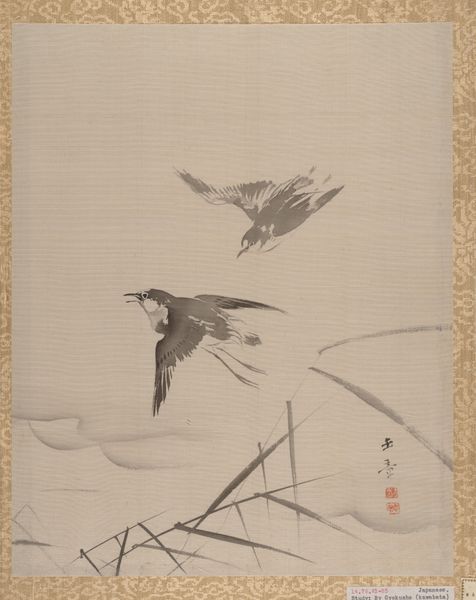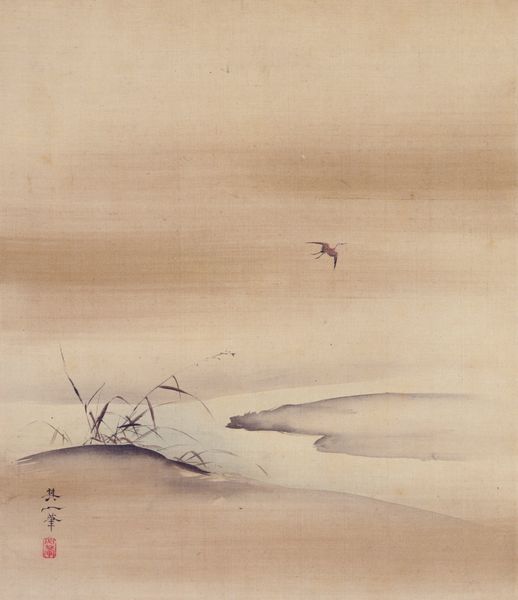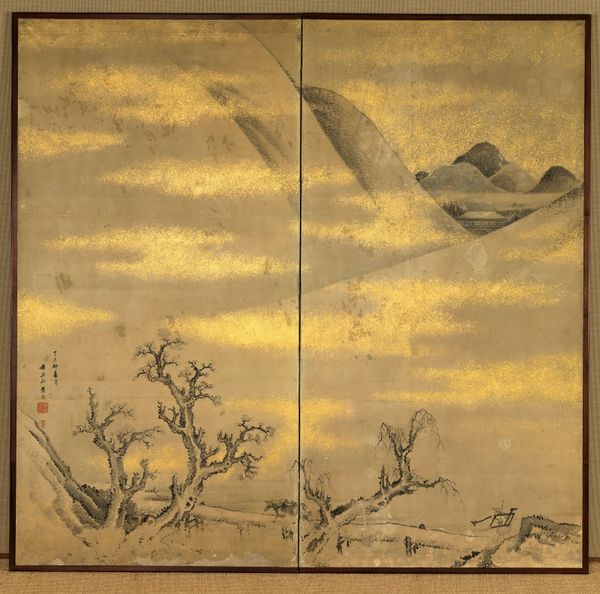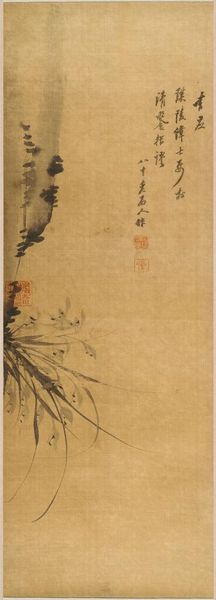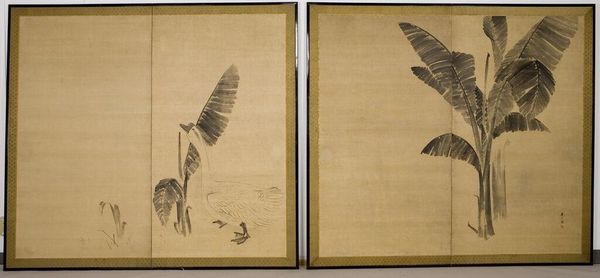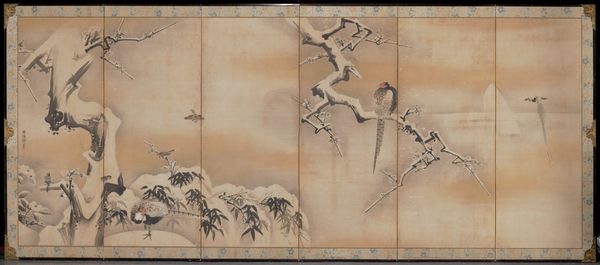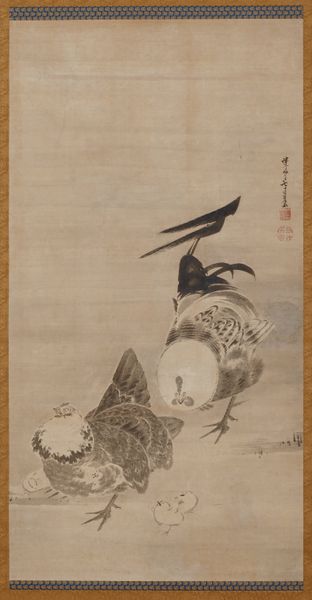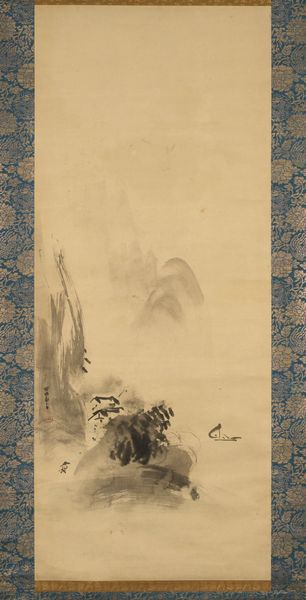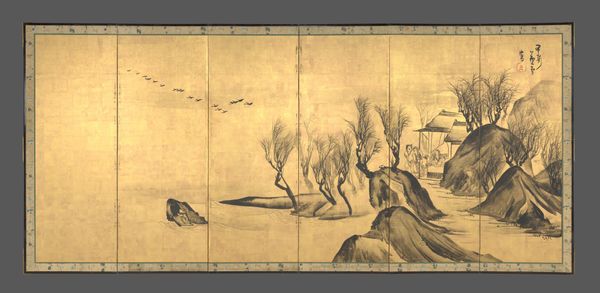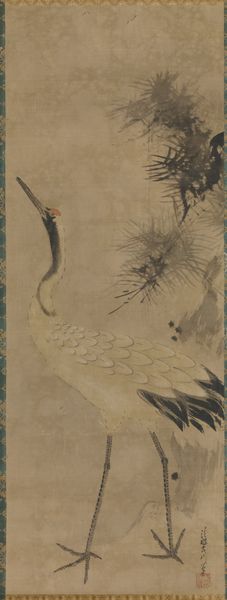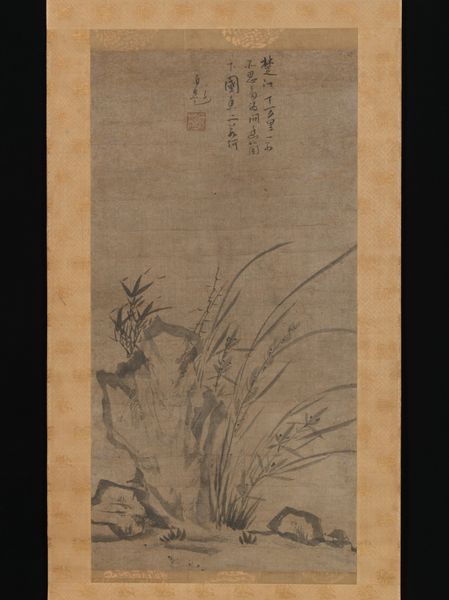
Goose and Small Banana Leaf 18th-19th century
0:00
0:00
Dimensions: painting proper: H. 154.6 Ã W. 171 cm (60 7/8 Ã 67 5/16 in.) overall with mounting: H. 171.5 Ã W. 188 Ã D. 2.2 cm (67 1/2 Ã 74 Ã 7/8 in.)
Copyright: CC0 1.0
Curator: The monumental screen before us, known as "Goose and Small Banana Leaf," is traditionally attributed to Maruyama Okyo. Editor: It's a study in stillness, isn't it? That goose poised between movement and rest, the subtle washes of ink creating a world that feels both present and dreamlike. Curator: Maruyama, a master of his time, truly elevated naturalism in Japanese art. He was so committed to observation and sought to capture the essence of his subjects through keen awareness of their form and the world around them. Editor: It’s clever, the way he uses the negative space, too. The goose occupies only one side of the screen, making it feel like it's breathing in the open air, or about to take flight. Curator: Indeed. And that emptiness also serves a cultural purpose, inviting the viewer into the scene to reflect on the relationship between nature, art, and perception. Editor: So, it’s less about the goose, specifically, and more about the feelings it stirs? Curator: Precisely. I see it as an invitation to consider how we interact with the natural world, how we project our own emotions onto the creatures we share the planet with. Editor: Well, next time I see a goose, I'll certainly feel a bit more reflective.
Comments
No comments
Be the first to comment and join the conversation on the ultimate creative platform.
